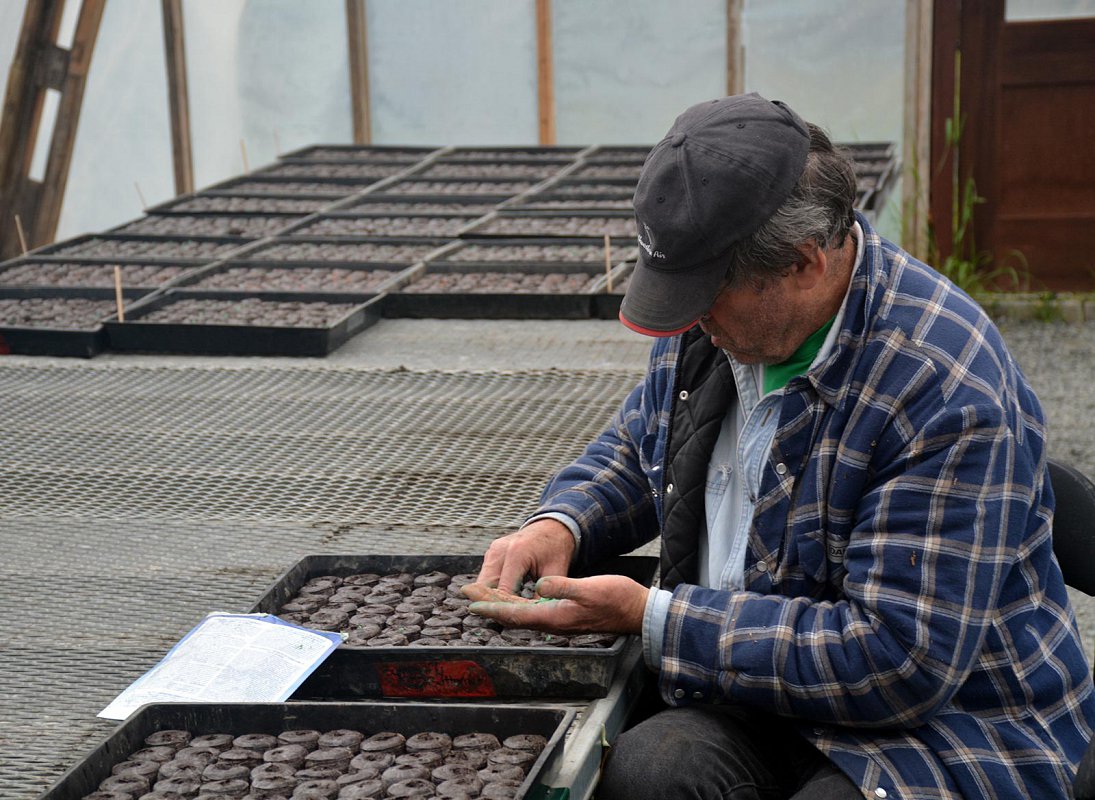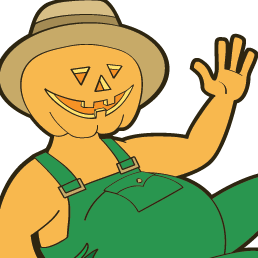Gettin’ ready for the fall
Posted 17 June 2017

The wet fall combined with the cold and snow in December and January turned McNab's Farm into a veritable winter wonderland.
The Trumpeter Swans didn't seem to mind, appearing in their usual numbers. There was even an appearance by a pair of Sandhill Cranes, usually not seen around here.
Check out our "Winter at the McNab's Farm" photo album for pictures of these magnificent birds and beautiful snowy landscape.
Our late, soggy spring meant the "winter lake" – aka the flooded fields – persisted rather stubbornly until the sun and warmth of May finally arrived. Fortunately the lousy weather didn't slow us down, and preparations for this years corn maze and pumpkin patch went on full steam ahead!
Planting plenty of pumpkins
Murray was busy in the greenhouse starting this years pumpkins in peat pellets (that's him in the photo above). We've had problems with mice eating the pumpkin seeds when they were planted directly in the field, so now we start the pumpkins in peat pellets in the greenhouse.
Although planting 10,000 peat pellets of pumpkins by hand takes a long time, it's worth it when – just 1 week later – the plants begin to appear. We start with the largest pumpkins first, as they take the longest to mature.
You can see more pictures of Murray preparing the pumpkin patch and corn maze in our "Prepping for 2017" photo album.
Planting in the peat pellets continued throughout May and the beginning of June. Things were getting a little crowded in the greenhouse by the 3rd week in May as we waited for Mother Nature to cooperate and turn the winter lake back into a field. The first pumpkins went in the ground at the end of that week and slowly but steadily have continued their migration to the great outdoors.
An a-maze-ing transformation begins
Meanwhile, preparations are underway for this years corn maze. The old stalks from last years maze were flattened by the tractor through the fall and winter, and the cobs have been picked clean of the corn by our visiting swans, ducks and geese (not to mention those out-of-town crane visitors).
Once the ground was dry enough the old stalks were turned back in to the soil with the big red tractor and disc. Afterwards the soil was broken up further with the rotator and made ready for planting the first week in June.
Lots of people ask how the maze is made. "Is it planted in the pattern?" is a common question. Well, the answer is that the corn is planted first, then the pattern cut later.
The planting of the corn is done a bit differently than the way you would if you were harvesting it instead of making a maze out of it. Normally you'd plant corn in rows – that wouldn't make a very good maze though! Instead, the corn is planted twice: once in regular rows then a second time in rows at 90 degrees from the first planting. This creates a solid field of corn ideal for the maze.
Every year we get help from one of our neighbours, who has a dairy farm. Cows eat a lot of corn, so naturally he has a larger corn planter than the one we use for planting the sweet corn that we grow on McNab's Farm.
Once the maze was planted at the beginning of June, our work had really just begun. We'll keep Murray busy for the rest of the summer planning, surveying, and cutting the maze in preparation for the fall.
Stay tuned for more updates!
